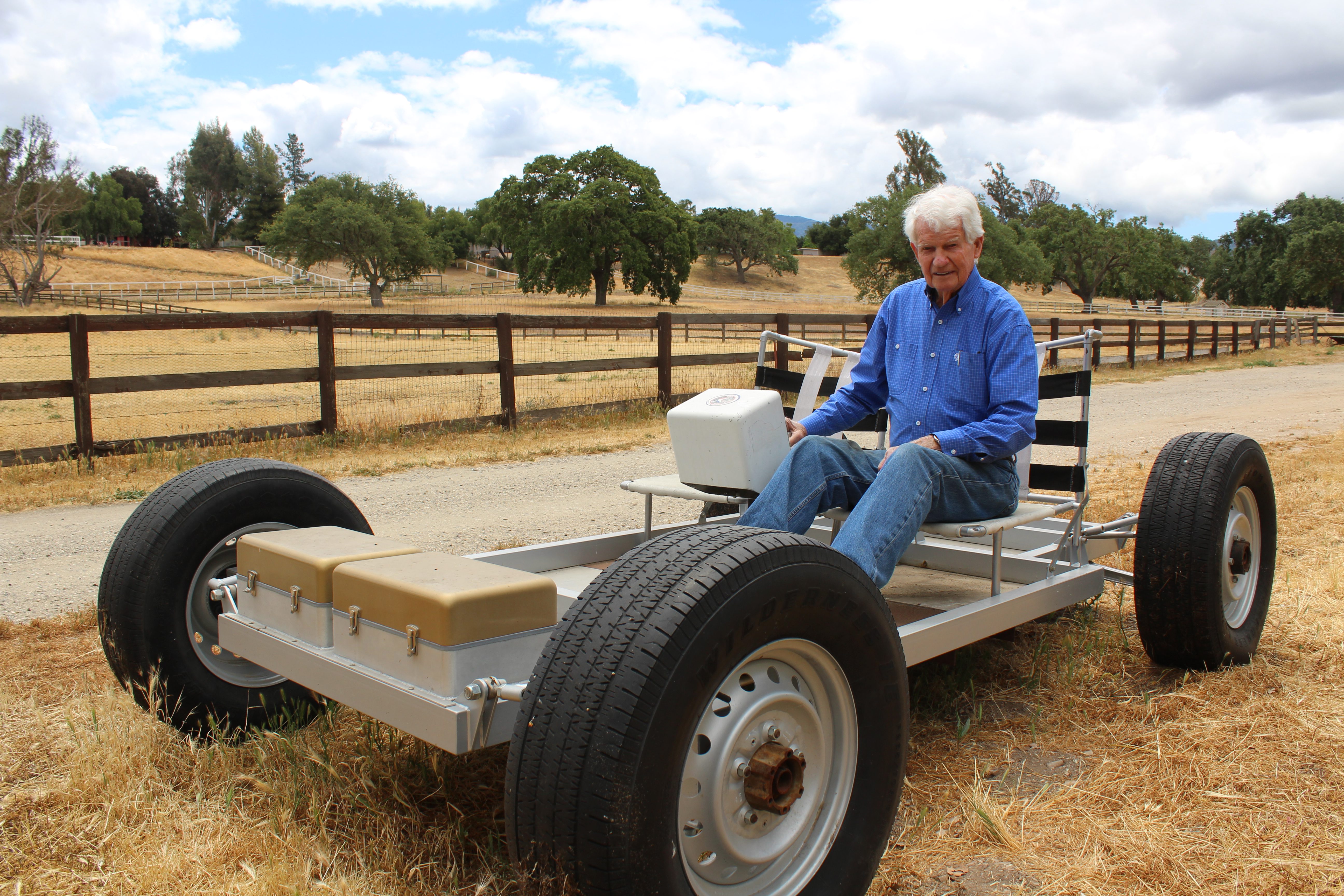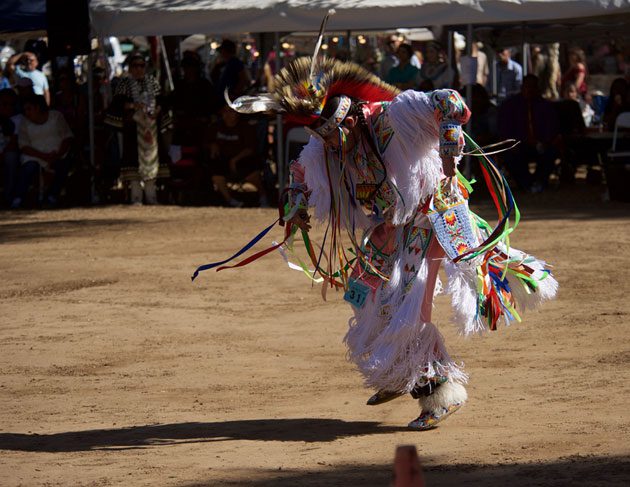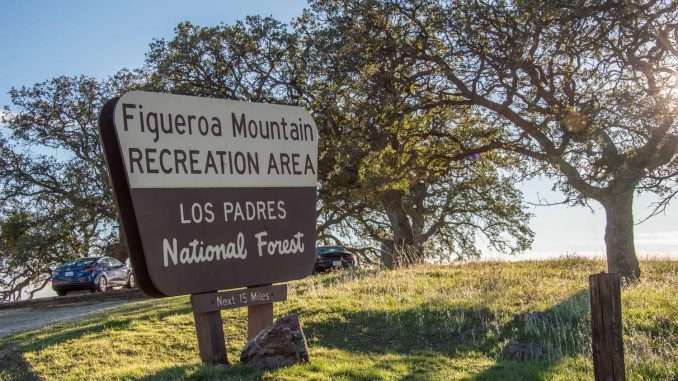By Raiza Giorgi
Rutledge “Putty” Mills stepped carefully as he made his way to the lower part of his acreage in Santa Ynez. At 95 years old, he moved quite spritely as he chattered about the upbringing that led him to become part of American history.
Near his barn, to an untrained eye, sat a gray go-cart-looking contraption with a NASA sticker on the front. But as he talked he revealed that this was the prototype he built for American astronauts to practice driving the Lunar Rover before their trip to the moon during the Apollo 17 landing in 1972.
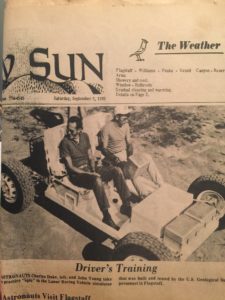
NASA paid $41 million for four moon rovers, but Mills built his prototypes for $2,000 each.
“I built two of them that the astronauts trained with, with surplus military supplies that cost about $2,000 each. NASA paid more than $40 million for four rovers that went up,” Mills said, proud that he had saved the government millions of dollars.
Mills and his fellow members of the Santa Ynez Valley Men’s Forum will be parading his prototype in this year’s Fourth of July Parade in Solvang.
Mills was born in the suburbs of Philadelphia in 1923 and remembers making the long trek across the country when his family decided to opt for warmer weather and moved to Santa Barbara on the advice of a friend.
“My mother had the trunk of the Buick packed and off we moved in 1930. Santa Barbara was an amazing community to grow up in, and I loved riding my motorcycle so much that I became the youngest member of the Santa Barbara Motorcycle Club,” Mills said.
When he graduated from Santa Barbara High School during World War II, Mills applied to be a fighter pilot. At the time, most kids idolized fighter pilots and Mills was ready to take the two-day test to become one of them.
“Out of two million people in the military the officers told me that I had the best scores. I guess I was pretty good, but by the time my training was over the war was just about finished,” Mills said.
Because he had “amphibious training,” which included very little water training in Morro Bay, Mills was flown overseas after the first assaults on Japan.
“I was staged in the Philippines for a year as cleanup, but we still took fire every day from enemies,” Mills said.
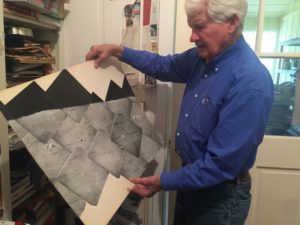
Mills shows pictures of the moon that were taken during test-landings of an unmanned moon shuttle.
After his tour was over, he was assigned to landing test shuttles on the moon with Saturn V rockets, which took 10 tries before one actually landed.
“During the flight the rocket took pictures that were sent back,” Mills said as he showed the original photographs from the project.
When the idea of the moon rover project was proposed, it was the design by Boeing that won. Then it was subcontracted to SB Research of Goleta.
“The engineers said they needed someone with experience in hardware and driving off-road, so I guess that’s when my name came up because my colleagues knew I rode motorcycles,” Mills said with a laugh.
He ended up moving to Flagstaff, where the rover testing would be done on rocky desert terrain that was similar to the surface of the moon. He worked closely with Gene Shoemaker, who was a renowned geologist and astronomer who trained the astronauts for their geological activities.
“When the Russians sent Sputnik up, it was extremely embarrassing to America and I remember Gene calling up President Kennedy and suggesting getting a man on the moon, and Kennedy told him go for it and by any means necessary,” Mills said.
He said he got to see Kennedy in person once, but never got to meet him.
As Mills was taking the designs from Boeing and creating the prototypes, they estimated the costs of building to be near half a million dollars.
“Being a conservative man … I put together most of the supplies from my surplus military catalogue,” Mills said.
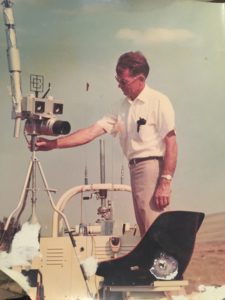
After building the prototype for the moon rover, Santa Ynez resident Rutledge “Putty” Mills stayed in Flagstaff to train the astronauts how to maneuver it.
The batteries had to be made of silver zinc, which could stand up to extreme conditions. Everyday lead-based batteries would not work in extreme cold. Mills also made gear reductions because the rover could travel only at low speeds.
“The rover was in one-sixth of our gravity, which meant it had to go really slow in order to stay on the surface,” he said.
With a 90-day turn-around for the prototypes, he got them built in 89 days, he laughed.
He also stayed to train astronauts Gene Cernan, Harrison Schmitt, Jim Irwin and Dave Scott to drive it.
Thinking back over his time and historic influence on space travel, Mills said he was proud to be called for the assignments. As a kid who never graduated from college, he is a self-taught engineer and still studies 40 hours a week.
“I love studying history and spend a lot of time reading. It keeps the brain sharp and youthful,” Mills said.
Mills said he is thrilled to present the prototype in the Fourth of July parade and hopes that everyone enjoys seeing a piece of American history up close.
“I was going to donate it to the space center that was going to be built on Vandenberg, but when that project was delayed, I hung onto it because I think it belongs in a museum on the Central Coast,” Mills said.

